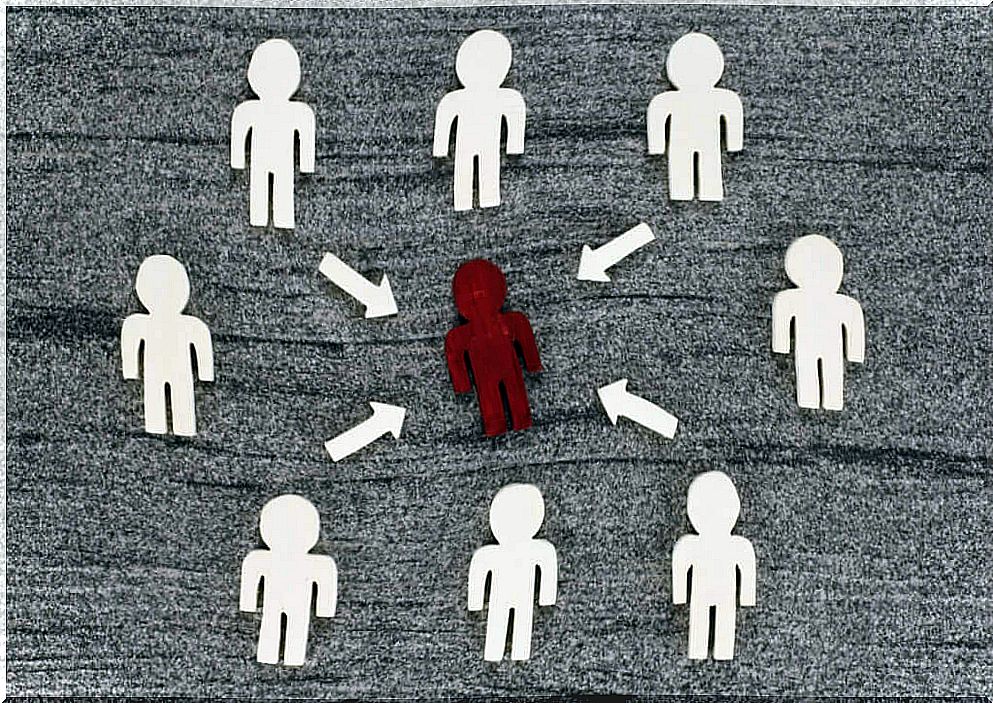Asch’s Experiment: How Far We Let Ourselves Go

Asch’s experiment is one of the best known in social psychology when it comes to group conformity. The simplicity of its procedure and the generalization of its results laid the foundation for studies on how the majority can influence our decisions and even our perception of the world.
Are you curious? In this article, we’ll describe one of the simplest, most fascinating, and most enlightening experiments in the history of psychology.
Solomon Asch and his influence on social psychology
Solomon Asch, born in Warsaw in 1907, is the leading reference in social psychology in terms of conformity studies. He focused his studies on the influence of the group on the individual, contributing to the creation of some concepts, such as the halo effect and the primacy effect.
However, the experiment that marked his career was carried out in 1951. In this study, Asch hoped to show that people can disagree when they understand that most are wrong.
However, unfortunately, reality is capricious. He found only results that supported the opposite hypothesis. Next, we’ll explain how this experiment was designed. Its simplicity and all its subsequent ramifications forever changed the paradigm of the study of social influence.

Asch’s experiment: how far we get carried away
Asch’s experiment was very simple. People had to use vision to answer a question with three answer options. The procedure was as follows:
- Groups of 7 to 9 people were formed, all of which, except the critical subject, were accomplices of the experimenter.
- Everyone received two cards: one with a reference line and one with three options, each with a line of different length. Only one of these three lines was equal to the reference line.
- In the first tests, all accomplices gave the correct answer, but at some point everyone began to agree with an answer that was not correct. For example, if the line that was the same as the one on the reference card was A, everyone said it was C.
At this point, what do you think the critical subject would respond? The logical thing would be to think that, although everyone was wrong, this person would respond to what he thought was correct. Well, it wasn’t like that: when all the accomplices agreed to choose a clearly incorrect option, most critical subjects responded the same as the group.
The paradigm of results
How is this possible? In a task as simple as looking at a line and deciding which of the others is the same, in principle there is no room for error, you see what you see. This is where Asch’s most important discovery comes into play; many of the critical subjects claimed that they saw a line as long as the first, when in reality it was not.
That is, not only is the individual’s opinion modified by what the majority say, but the physical perception itself is sensitive to its influence. The criticism that was made is that, as it is a minor task, the subject could respond in the same way as the others for the simple interest of avoiding the dilemma.

Reflections on Asch’s Experiment
These results left a very important question for social psychology: to what extent are we willing to change our opinions, decisions and even our perceptions due to the influence of other people?
In this sense, the basic approach of the experiment favors the generalization to everyday situations: leisure marked by groups of friends, professional careers highly conditioned by the family’s opinion and even social prejudices such as racism or machismo.
It is important to question the extent to which we are influenced by considering certain things as important or being against them. Oftentimes, manipulation of the system consists in trivializing certain aspects of life in order to achieve individual conformity.
Not everyone wants to go against the grain when it comes to the length of a line, but what about voting or not? Another example, is fashion so important as to condemn a man in a skirt?









